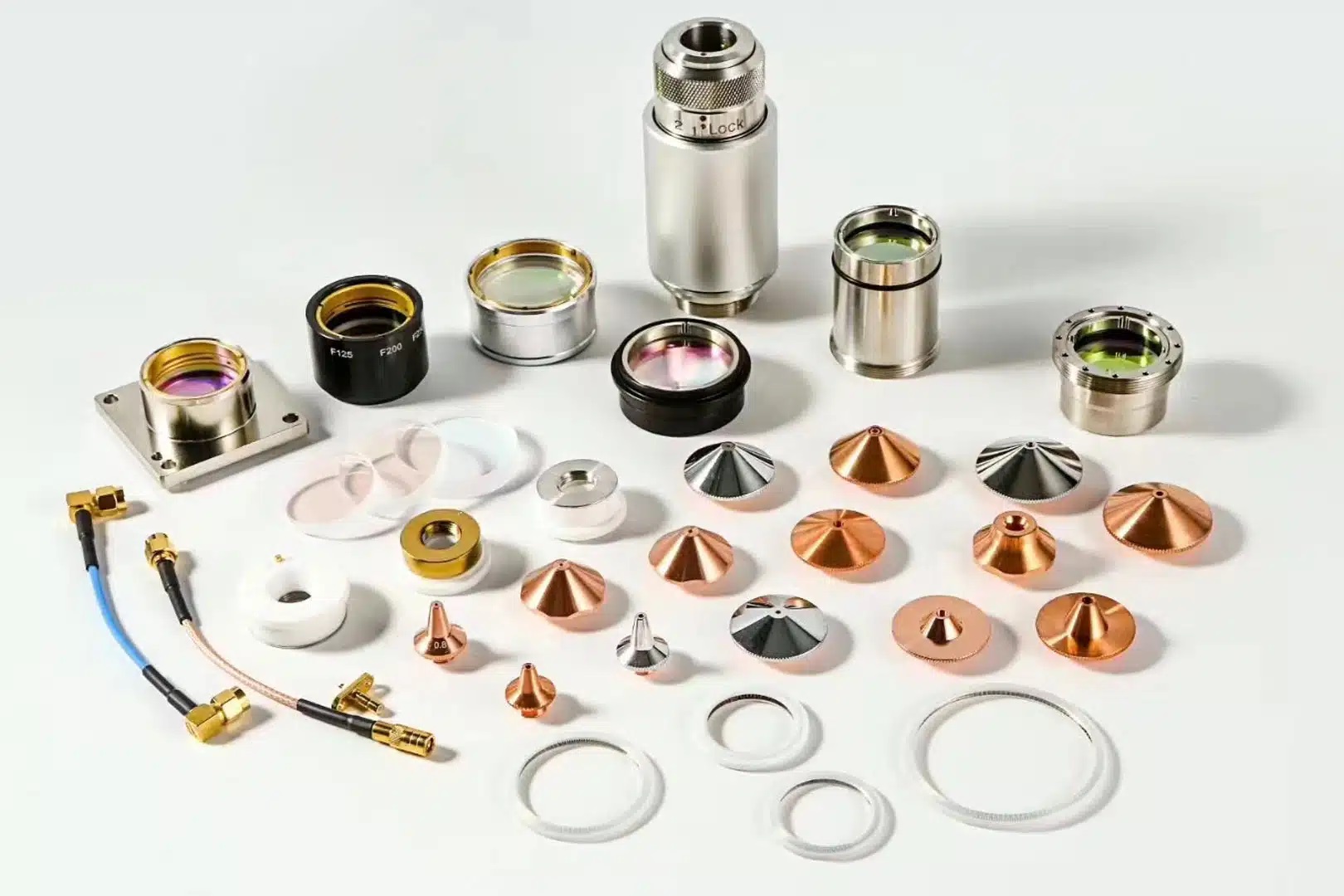
Guide to Proper Nozzle Selection for Laser Cutting
Laser cutting is universally recognized in the manufacturing industry for its high efficiency, high quality, and high precision metal cutting. Even so, there are still many factors affecting laser cutting, of which the correct choice of laser cutting nozzle is particularly critical. Cutting different types of metal materials and cutting different thicknesses of the same type of metal materials can be optimized with the correct nozzle selection. This guide will walk you through the essential aspects of nozzle selection, focusing on types, materials, and key considerations.
The Importance of Nozzles in Laser Cutting
Nozzles in laser cutting serve several critical functions:
- Gas Flow Regulation: They direct assist gas to the cut zone, forming a high-pressure, high-speed gas flow that blows away molten and vaporized particles, preventing them from contaminating the optical components.
- Laser Beam Focus: Nozzles help in focusing the laser beam accurately onto the material.
- Heat Management: They assist in managing the heat generated during the cutting process.
Different terms are used to refer to nozzles, such as laser nozzle, laser cutting nozzle, laser cutting head nozzle, and laser cutting copper nozzle. Regardless of the terminology, their role remains crucial in ensuring efficient and precise cutting.
Types of Laser Cutting Nozzles
- Material Composition
- Copper Nozzles: Standard option with good thermal conductivity.
- Antimony Copper Nozzles: Higher hardness and lower impurity content, making them more durable and effective for high-precision tasks.
- Nozzle Construction
- Single-Layer Nozzles: Provide slower gas flow, ideal for cutting non-ferrous metals like stainless steel, aluminum, and copper, typically using nitrogen as an assist gas.
- Double-Layer Nozzles: Offer faster gas flow, suitable for high-speed cutting, especially for carbon steel, generally using oxygen as an assist gas, which might cause blackening due to oxidation.
- Nozzle Coating
- Chrome-Plated Nozzles: Available in ordinary chrome and hard chrome variants, providing enhanced durability and resistance to wear.
- Nozzle Types Based on Application
- Fast-Cutting Nozzles: Designed for speed.
- High-Pressure Nozzles: Suitable for thicker materials requiring higher assist gas pressure.

The Importance of Nozzle Concentricity
Nozzle concentricity refers to the alignment of the nozzle center with the laser beam center. High concentricity is crucial for:
- Cut Quality: Ensures even gas distribution, preventing one-sided melting stains.
- Sharp Corner Quality: Minimizes local over-melting, crucial for cutting workpieces with sharp corners or small angles.
- Perforation Stability: Helps in maintaining stable perforation times, especially important when cutting thicker plates.
Selecting the Right Nozzle Aperture
The aperture size of the nozzle significantly impacts cutting quality and performance:
- Thin Plates (<3mm)
- 1.5mm Aperture: Yields thinner cutting surfaces.
- 2mm Aperture: Results in thicker cutting surfaces with potential melt stains at corners.
- Thick Plates (>3mm)
- 1.5mm Aperture: Small gas diffusion area, less stable but usable.
- 2mm Aperture: Larger gas diffusion area, providing more stable cutting.
- 2.5mm Aperture: Suitable for plates over 10mm thick.
Larger aperture nozzles offer better gas diffusion but can increase the risk of slag rebound, potentially reducing the lifespan of the focusing lens.
Conclusion
Choosing the correct nozzle for laser cutting involves understanding material types, thickness, and specific cutting requirements. The right nozzle can greatly enhance cutting quality, efficiency, and equipment longevity. By following this guide and consulting with specialists, you can optimize your laser cutting process for the best possible results.
